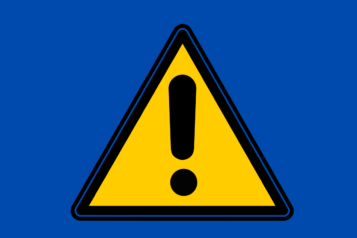Technical Writing
Hazards of Poorly Written Technical Documentation
© Ugur Akinci I don’t like to whine and be negative in general. Life is too short to go around fuming about things that we can’t change. However, there are times when we all need to be critical in order to improve things; especially if they fall within our area of expertise. The other day…
Read MoreAn Online Dictionary of Hi-Tech Terms for Technical Writers: SE VOCAB
© Ugur Akinci Dictionaries are the bread and butter of our profession. As technical writers we need them like the parched earth needs rain water. In technical writing, a good dictionary serves at least two important purposes: (1) To make sure that what we are writing is correct. (If a technical document is not correct,…
Read MoreHow to Delete the Header and Footer from the FRONT and BACK COVERS of a Word Document
Removing header or footer from the first page (front cover) is very easy: 1) Double-click the header or footer area to display the “HEADER & FOOTER TOOLS” on the ribbon. 2) Select the “Different first page” check-box to remove your regular header & footer from the first page. Removing header or footer from the last…
Read MoreThe “INVERTED PYRAMID” Principle in Technical Writing
The “INVERTED PYRAMID” principle is very simple: write what is most important the first, and what is the least important the last. REMEMBER: IMPORTANT STUFF – write them right away! Don’t sit on them. The traditional style of writing takes its time by first establishing the “base” of knowledge, similar to the way a regular…
Read More7 Tips to Localize Your Technical Documents Successfully
Here are 7 tips to localize your technical documents successfully. “Localization,” or the translation of documents into multiple languages and their adaptation to local cultures, is a fast developing communication niche. We live in a “globalized” world. These days not only the goods and services but also all kinds of documents are shipped to (or are accessed…
Read MoreHow to Make Sure Your Verb Agrees with Your Subject in Technical Writing
© Ugur Akinci It’s a fundamental rule of English grammar: your VERB must agree with the SUBJECT of your sentence. A SINGULAR subject must take a SINGULAR verb. A PLURAL subject must take a PLURAL verb. Why am I addressing this very basic rule? The reason is, the violation of this rule can potentially have disastrous consequences in…
Read MoreWatch Your Adjectives Like a Hawk in Technical Writing
Watch your adjectives like a hawk when you’re writing a list or a procedure in a technical document. Here is an example from the “Workout & Nutrition Guide” that came with the exercise equipment I’ve bought the other day. EXAMPLE 1 “Continue your workout until you feel you are no longer using good form.” What…
Read MoreHow to Write Notes, Cautions, and Warnings
Introduction How to write notes, cautions, and warnings is an important skill in documentation. They can be used to make a point clear or to warn the reader about something they should be careful about or the possibility of personal injury. You can hurt or at least drive your readers crazy if you neglect the…
Read MoreTwo Ways to Direct Your Readers in Technical Writing
© Ugur Akinci There are many times when while writing a procedure you’ll have to direct a reader in one direction or another. There are two types of directing instructions: A REFERENCE and a BRANCH statement. And both of them can be either CONDITIONAL or UNCONDITIONAL. I’ll give an example of each. UNCONDITIONAL REFERENCE: Refer…
Read MoreIf You Ask a Rhetorical Question, Answer It, Right Away
If you pull your readers into a topic by asking a rhetorical question that’s perfectly acceptable as a writing style. But if you do that, you’d better answer your own question right away. Otherwise some of your readers can be really frustrated. Rhetorical questions increase the stakes. They introduce a tension that needs to be relieved by…
Read More
